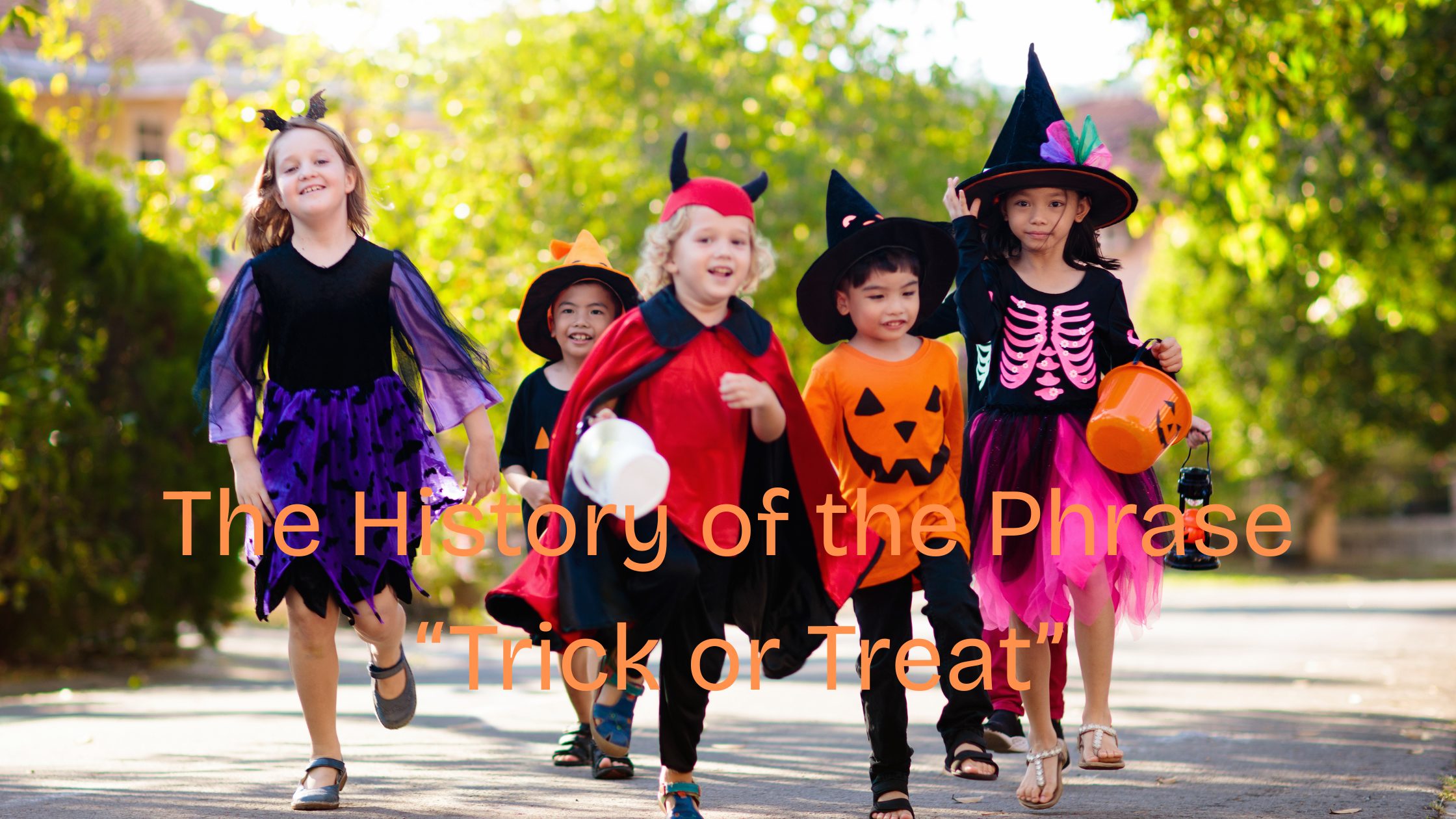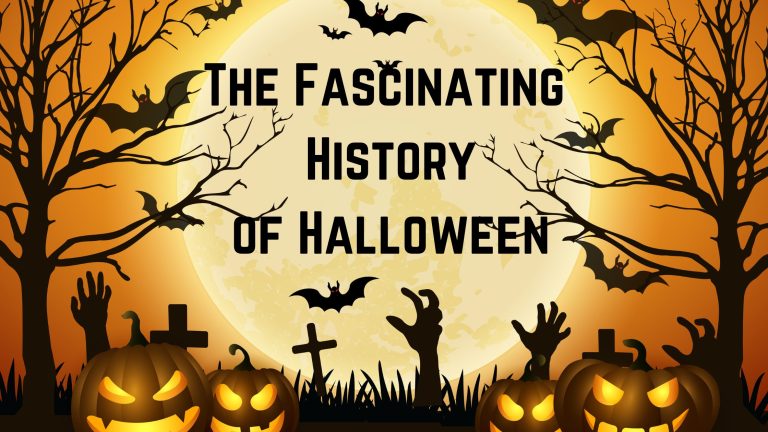
The History of the Phrase “Trick or Treat”
Every year on Halloween night, one phrase echoes through neighborhoods more than any other: “Trick or Treat.” It’s short, playful, and instantly recognizable, a phrase that signals candy-filled bags, costumed children, and smiling neighbors. Today, saying “Trick or Treat” feels timeless, as if it has always been part of the holiday. But the phrase is not as old as many people think, and its journey from ancient rituals to a global tradition is full of fascinating history. By exploring its origins and cultural influences, we can see how “Trick or Treat” became one of the most iconic phrases in the English language and a cornerstone of Halloween celebrations around the world.
The Ancient Roots of Halloween and Door-to-Door Traditions
Long before children dressed up as superheroes and princesses to collect candy, the people of ancient Ireland, Scotland, and parts of northern Europe celebrated Samhain, a festival marking the transition from harvest to winter. Samhain was seen as a time when the boundary between the living and the spirit world grew thin. People feared restless souls and sought to appease them with offerings. Bonfires were lit, disguises were worn, and food was left outside homes to distract or honor the spirits.
Though no one said “Trick or Treat” during Samhain, the idea of disguises and giving food to ward off supernatural forces created the foundation for what would later become Halloween. These rituals served both practical and spiritual purposes—keeping communities safe, ensuring good fortune for the coming season, and reinforcing social bonds.
The Christian Influence: All Hallows’ Eve and Souling
As Christianity spread across Europe, Samhain merged with new religious practices. The church established All Saints’ Day on November 1 and All Souls’ Day on November 2, with the evening of October 31 becoming All Hallows’ Eve—eventually shortened to Halloween.
During this period, the practice of souling emerged in England and parts of Ireland. The poor, including children, would go door-to-door asking for food, particularly soul cakes, in exchange for prayers for the dead. This custom is significant because it shows one of the first documented instances of going house-to-house during the autumn season for food. The exchange carried spiritual meaning: prayers for treats, blessings for the giver, and remembrance for souls.
From Souling to Guising: The Birth of Performance-Based Traditions
By the Middle Ages and into the Renaissance, the practice evolved further in Scotland and Ireland with guising. Children disguised themselves in costumes and visited homes, performing short poems, jokes, or songs in exchange for fruit, nuts, or coins. Unlike souling, guising leaned more toward entertainment than prayer. It blended disguise with performance, and this playful approach brought it even closer to what modern trick-or-treating looks like today.
What makes guising especially important is that it introduced the idea of performing a “trick” to earn a “treat.” Though the phrase did not exist, the spirit of the exchange was alive and well centuries before candy-filled Halloween bags became a norm.
Halloween Crosses the Atlantic: Mischief and Community in America
When Irish and Scottish immigrants arrived in North America in the 19th century, they brought their Halloween customs with them. At first, Halloween celebrations in the U.S. leaned heavily toward community gatherings, ghost stories, and playful mischief. Children and young adults would roam neighborhoods causing pranks—sometimes harmless, but occasionally destructive.
By the early 20th century, Halloween mischief had escalated in some cities. Newspaper reports documented pranks involving broken fences, soaped windows, and even overturned outhouses. Communities began looking for ways to channel this energy into safer traditions. One solution was to offer children small rewards—coins, fruit, or candy—instead of having them cause trouble. This is where the spirit of “Trick or Treat” began to emerge, even before the phrase itself entered popular speech.
The First Appearances of the Phrase “Trick or Treat”
The earliest known printed use of the phrase “Trick or Treat” dates back to Canada in the 1920s. A 1927 newspaper article from Alberta describes children going door-to-door demanding “trick or treat.” The words reflected a playful ultimatum: give us something sweet, or we may play a harmless prank.
By the 1930s, American newspapers also began mentioning the phrase. Communities quickly understood its meaning, and the phrase spread through neighborhoods. Unlike souling, which involved prayers, or guising, which involved performance, “Trick or Treat” expressed a simple, direct choice: either a treat is given, or a trick is risked. This catchy phrase captured the playful essence of Halloween in just three words.
Trick or Treat and the Rise of Candy Culture
In the 1940s, Halloween trick-or-treating temporarily declined due to sugar rationing during World War II. Yet once rationing ended, the tradition rebounded even stronger. By the 1950s, with the growth of suburban neighborhoods and family-centered communities, “Trick or Treat” had become the heart of Halloween celebrations.
Candy companies recognized the opportunity and began advertising specifically for Halloween. Ads encouraged parents to buy individually wrapped candies, presenting them as the perfect Halloween treat. By the 1960s and 1970s, candy had overtaken fruit, nuts, or coins as the standard Halloween handout. The commercial success of the candy industry ensured that “Trick or Treat” became not only a tradition but also a major driver of seasonal sales.
“Trick or Treat” in Popular Culture
The phrase gained further cultural traction through television, movies, and cartoons. One of the most iconic moments came with the 1966 Peanuts special, “It’s the Great Pumpkin, Charlie Brown,” where the characters repeatedly say “Trick or Treat!” This cemented the phrase in the minds of millions of viewers.
Hollywood horror films also kept the phrase alive, often using it in eerie or playful ways. From horror classics to family-friendly movies, “Trick or Treat” became shorthand for Halloween itself. Even outside of Halloween, the phrase has entered everyday language as a playful way of framing choices or negotiations.
The Phrase Goes Global
Though “Trick or Treat” is most strongly associated with the United States and Canada, its influence has spread worldwide. In the United Kingdom, where guising was once the dominant custom, children increasingly adopted American-style trick-or-treating in the late 20th century, influenced by television and movies. Today, children in countries such as Australia, New Zealand, Germany, and Japan also celebrate Halloween by saying “Trick or Treat,” often using the phrase in English even when speaking other languages.
This globalization highlights how American culture, combined with commercial appeal, transformed “Trick or Treat” from a regional phrase into an international Halloween tradition.
What “Trick or Treat” Really Means Today
While originally carrying the suggestion of a prank, the phrase today is more symbolic than literal. Most children have no intention of playing tricks; they simply say it as part of the ritual. Yet the phrase still carries Halloween’s playful sense of mischief and fun. The “trick” side of the phrase reminds us of Halloween’s mischievous roots, while the “treat” side reflects community generosity and celebration.
It is this balance of playful threat and generous reward that makes “Trick or Treat” so unique. It encapsulates both the spooky and joyful sides of Halloween—a night where costumes, imagination, and community spirit all come together.
Why the History of “Trick or Treat” Matters
Exploring the history of “Trick or Treat” is more than just curiosity about where a phrase came from. It reveals how traditions evolve, how cultures influence one another, and how communities adapt rituals for new times. From Celtic bonfires to Christian prayers, from Scottish guising to American pranks, and from local newspaper mentions to global popularity, “Trick or Treat” carries echoes of centuries of human creativity.
It also shows how businesses and media play roles in shaping cultural traditions. Without the candy industry’s marketing, without wartime adjustments, and without beloved cultural works like Peanuts, “Trick or Treat” might not be the global phenomenon it is today.
A Phrase That Will Live On
As long as Halloween is celebrated, the phrase “Trick or Treat” will remain at its heart. It is simple enough for young children to say yet meaningful enough to carry centuries of history within it. It symbolizes fun, community, and imagination, while nodding back to mischievous pasts and spiritual origins. Whether whispered by a shy child on a doorstep or shouted gleefully by a crowd of kids in costumes, “Trick or Treat” is more than just a request for candy—it is a living piece of folklore that connects us to generations before and ensures that Halloween continues to evolve while holding onto its roots.
So, the next time you hear “Trick or Treat!” at your door, remember that you are part of an ancient ritual, a cultural adaptation, a neighborhood celebration, and a global tradition all rolled into three simple words.



